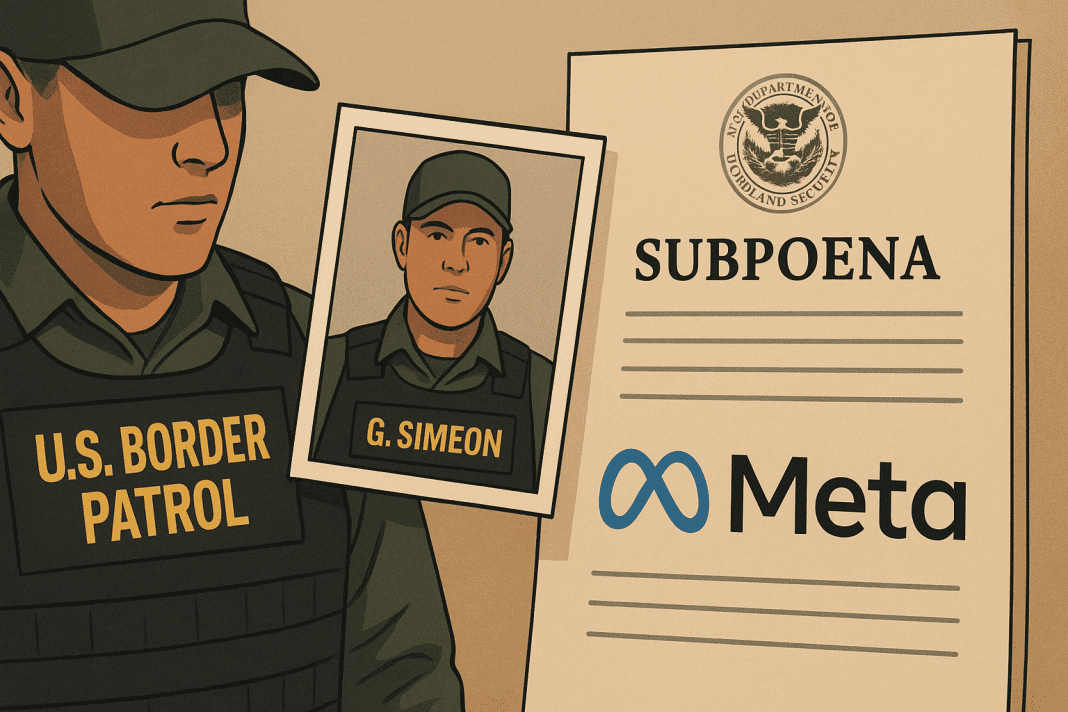The Department of Homeland Security (DHS) recently issued a subpoena to Meta, the parent company of Instagram, in an effort to obtain information about several accounts that posted images of a Border Patrol agent. The move came after a post identifying an agent involved in immigration raids went viral.
DHS Subpoena Targets Social Media Users
On September 2, a mobile alert platform shared the post, allowing users to report and receive updates about Immigration and Customs Enforcement (ICE) activities. The post included photos showing an agent wearing a name badge marked “G. Simeon” and a video set to music, along with the caption, “Let’s welcome Georgy Simeon to the wall of shame.” Multiple community defense groups coordinated to circulate the post.
After the post appeared, DHS sent an administrative subpoena to Meta, requesting subscriber information for several accounts, including the account that shared the post. The subpoena asked Meta to provide details such as email addresses, phone numbers, and account names. Meta initially planned to comply with the subpoena unless someone filed a legal challenge. Later, Meta extended the deadline for compliance to September 19.
Lawyers representing the account developer filed a motion to quash the subpoena in federal court, arguing that the request exceeded lawful authority. They claimed the subpoena could intimidate users from exercising free speech, especially speech critical of government agencies.
Legal Experts Question DHS Approach
DHS justified the subpoena by citing concerns for “officer safety” and described the action as part of a criminal investigation. The department also referred to a reported increase in assaults on ICE officers, claiming a 1,000% rise in such incidents. The agency linked this surge to statements and posts by public figures and activists.
Legal analysts and digital rights experts raised questions about DHS’s approach. They noted that authorities could be overreaching by using immigration laws to obtain social media data about posts that criticize government officials. They also expressed concerns that the action may aim more to discourage public criticism than to address genuine security threats.
Arrest of Kilmar Abrego Garcia triggers controversy over DHS social media messages
The move has drawn attention because it highlights tensions between government authorities and online platforms over the limits of free speech and privacy. It also prompts questions about how social media companies handle government requests for user data and how authorities may monitor individuals’ online activity in sensitive contexts.
Implications for Online Reporting on ICE Activities
The subpoena illustrates growing scrutiny on platforms where users report and discuss immigration enforcement. The mobile alert system that shared the post was designed to provide real-time updates on ICE activities and was widely used by communities to stay informed.
The request for subscriber information from Meta shows how authorities are monitoring digital spaces for content related to immigration enforcement. Critics argue that such actions could have a chilling effect, discouraging people from sharing information online due to fear of legal consequences.
Trump administration moves to send federal officers to Chicago for immigration enforcement
Meta, while initially prepared to comply with the subpoena, indicated that the company would respond differently if a formal legal challenge were filed. This highlights the complex role social media platforms play when balancing legal obligations with user privacy and free speech rights.
The case has attracted significant attention from civil liberties advocates, who emphasize the importance of protecting online expression, particularly when it involves reporting on government activities. By pursuing subscriber data linked to posts about immigration enforcement, authorities are testing the limits of legal authority over digital communications and public reporting.

